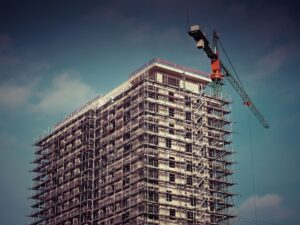As a property owner or manager, understanding the intricacies of building insurance for flats is crucial. Whether you’re a freeholder, leaseholder, or a representative of a property management company, having the right insurance coverage for your block of flats is a responsibility that cannot be overlooked. In this guide, we delve into the nitty-gritty of what building insurance covers in flats, how it operates, and the factors to consider when selecting a policy.
What is Building Insurance for Flats?
Building insurance for flats, often referred to as ‘block insurance’ or ‘block of flats insurance’, is a specialised form of coverage designed to protect the physical structure of a property that houses multiple dwellings. This includes the building itself, any communal areas, and external features like garages, gardens, and hardstandings.
Who Requires Building Insurance for Flats?
Building insurance for flats is primarily designed for:
- Freeholders: Owners of the property and land on which it stands.
- Leaseholders: Individuals who have a lease from the freeholder to use the property for a specified number of years.
- Management Companies: Entities responsible for the maintenance and management of the property.
What Does Building Insurance Cover in Flats?
Building insurance for flats provides coverage for a variety of risks (called ‘perils’) and damages, including:
- Fire, Storm, and Flood Damage: The policy covers the cost of repairs if the building is damaged due to fire, storm, or flood.
- Accidental Damage: If the building suffers accidental damage, the policy provides coverage for the repair costs.
- Third-Party Damage: If a third party causes damage to the building, the policy should cover the cost of repairs.
- Loss of Rent and Alternative Accommodation: If the property becomes uninhabitable due to an insured event, the policy may cover the loss of rent for the landlord and the cost of alternative accommodation for tenants.
Factors to Consider When Selecting Building Insurance for Flats
When selecting building insurance for flats, several factors must be considered:
- Rebuild Cost: The rebuild cost is how much it would cost to rebuild the property based on materials and labour. This is different from the market value of the property. To get an accurate estimate of your rebuild cost, you can use an online calculator provided by the Royal Institute of Chartered Surveyors or consider having a survey conducted.
- Occupancy: The occupancy of the various flats may raise concerns for your insurer. Some types of tenants, like students, might be viewed as presenting a higher risk of a claim.
- Claims History: If you have any claims on home insurance within the last few years, it’s important to declare these to your insurer when asked.
- Joint Freeholders: If the freehold is shared, you may need to provide their information as well, including their date of birth and history of claims.
Additional Coverages to Consider
In addition to the standard building insurance for flats, there are additional coverages that you may want to consider if you are a Director of a Resident-led Management Company or Freehold Company:
- Directors’ & Officers’ Liability Insurance: This type of insurance protects the directors and officers of a residential management company against the cost of defending or settling legal claims made against them.
- Engineering Insurance and Inspection Services: This covers the breakdown of mechanical, electrical, or lifting equipment and includes the cost of necessary inspections.
- Terrorism Insurance: This provides coverage for damage to your property as a result of a terrorist attack.
- Legal Expenses Insurance: This can help fund unexpected legal disputes with contractors, neighbours, and employees.
The Importance of Building Valuations
Ensuring that your building insurance for flats accurately reflects the rebuild cost of your property is crucial. If you’re underinsured, you could be left with a significant shortfall in the event of a claim. It’s recommended that a block should be surveyed for valuation purposes every 3-5 years.
Making a Block of Flats Insurance Claim
In the unfortunate event that you need to make a claim, your insurer will guide you through the process. It’s important to provide accurate and complete information about the incident to ensure a smooth claims process. Typically, the details for making a claim can be found on the insurance policy itself. Alternatively, companies like Strangford Management Ltd create clear processes for what to do in the event that you wish to file a claim.
Read more…
- EWS1 Form Explained: Hidden Requirements Your Surveyor Won’t Tell You
- NHBC Cover Explained: Your Essential Guide for Leaseholders (2025)
- Ministers Set £30bn Cladding Crisis Deadline for 2029
- Service Charge Disputes Made Simple: Your Rights as a Leaseholder
- Breaking: Leasehold Reform Scraps Two-Year Wait Rule From January 2025




